Table of Contents
Come join us now, and enjoy playing your beloved music and browse through great scores of every level and styles!
Can’t find the songbook you’re looking for? Please, email us at: sheetmusiclibrarypdf@gmail.com We’d like to help you!
King Crimson – 21st Century Schizoid Man sheet music, Noten, partitura, spartiti, partition, 楽譜 乐谱 (Play Along).
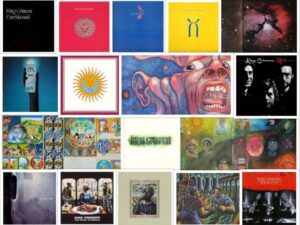
Best Sheet Music download from our Library.
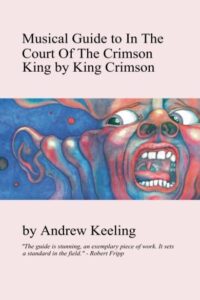
Please, subscribe to our Library.
If you are already a subscriber, please, check our NEW SCORES’ page every month for new sheet music. THANK YOU!
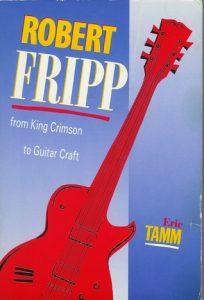
Browse in the Library:
Or browse in the categories menus & download the Library Catalog PDF:
King Crimson: The Ever-Evolving Architect of Progressive Rock
King Crimson is not merely a band; it’s an ongoing experiment, a relentless pursuit of musical exploration, and arguably the most influential and consistently challenging force within the progressive rock genre. Founded in 1968 by guitarist Robert Fripp and drummer Michael Giles, Crimson defied categorization from the outset, crafting a sound that was simultaneously grandiose, complex, dissonant, and profoundly beautiful. Their legacy is one of constant reinvention, uncompromising artistic vision, and a profound impact that resonates far beyond the boundaries of prog.
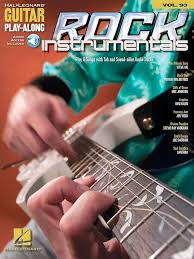
Genesis and the Earth-Shaking Debut (1968-1969):
- Formation: Fripp, Giles, lyricist Peter Sinfield, bassist/vocalist Greg Lake, and multi-instrumentalist Ian McDonald.
- In the Court of the Crimson King (1969): This debut album wasn’t just successful; it was seismic. It defined the nascent progressive rock movement. Tracks like the apocalyptic “21st Century Schizoid Man” (with its ferocious jazz-metal fusion, distorted vocals, and complex structure) and the majestic, melancholic “Epitaph” showcased an unprecedented blend of symphonic ambition, jazz improvisation, classical influences, hard rock power, and avant-garde textures. Sinfield’s evocative, often dark lyrics and his innovative use of the Mellotron (creating orchestral swathes) became signature elements. This album remains a cornerstone of rock history.
Constant Flux: The First Era (1969-1974)
King Crimson became notorious for its revolving door of members, with Fripp as the sole constant. Each lineup shift brought a radical sonic change:
- Islands Band (1970-1971): After Lake left for ELP and McDonald departed, the band moved towards a more jazz-inflected, atmospheric, and sometimes pastoral sound on In the Wake of Poseidon (1970), Lizard (1970 – featuring Jon Anderson of Yes on vocals), and Islands (1971). Bassist/vocalist Boz Burrell and saxophonist/flutist Mel Collins were key figures.
- The Wetton-Bruford Powerhouse (1972-1974): This is often considered the definitive “classic” lineup. Fripp, bassist/vocalist John Wetton (powerful, aggressive), drummer Bill Bruford (ex-Yes, jazz-inflected precision and power), violinist David Cross, and returning lyricist Sinfield (briefly). They forged a heavier, denser, more dissonant, and intensely powerful sound.
- Larks’ Tongues in Aspic (1973): A landmark. Introduced intricate interlocking guitar/violin patterns, complex rhythmic structures, heavy rock riffs (“Larks’ Tongues in Aspic Part I”), delicate ballads (“Book of Saturday”), and avant-garde improvisation. Bruford’s percussion arsenal expanded dramatically.
- Starless and Bible Black (1974): Further refinement, featuring both live improvisations and complex composed pieces. Darker and more intense.
- Red (1974): A monolithic masterpiece. Arguably their heaviest album, defined by the crushing title track, the intricate “Fallen Angel,” and the epic, melancholic “Starless.” It distilled their power and complexity into a concentrated, brutal, yet beautiful form. Fripp disbanded Crimson shortly after its release, feeling it was the peak of that particular approach.
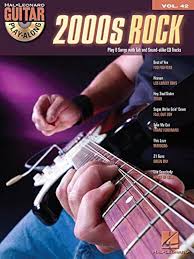
The Discipline Era: New Wave, Minimalism, and the “Double Trio” (1981-1984, 1994-1997)
After a seven-year hiatus, Fripp resurrected Crimson with a completely new sound and concept:
- The “Discipline” Quartet (1981-1984): Fripp, guitarist/vocalist Adrian Belew (ex-Zappa, Talking Heads – bringing abstract lyrics, vocal versatility, and a new guitar texture), bassist Tony Levin (inventing the “Stick” and Funk Fingers), and returning drummer Bill Bruford.
- Musical Style: Radically different. Influenced by New Wave, African polyrhythms (via Talking Heads), minimalism (Steve Reich, Philip Glass), and gamelan music. Characterized by:
- Interlocking Guitars: Fripp and Belew wove intricate, cyclical patterns (“mathematical” but groovy).
- Complex Polyrhythms: Bruford and Levin created driving, interlocking grooves.
- Minimalist Aesthetics: Repetition, texture, and precise ensemble playing became paramount.
- Accessible Yet Complex: Tracks like “Elephant Talk,” “Frame by Frame,” and “Thela Hun Ginjeet” were angular, funky, and surprisingly catchy while remaining intellectually rigorous.
- Albums: Discipline (1981), Beat (1982), Three of a Perfect Pair (1984). Each explored facets of this new approach before Fripp dissolved the band again.
- The Double Trio (1994-1997): Fripp reconvened the 80s quartet and added bassist/stick player Trey Gunn and drummer/percussionist Pat Mastelotto, creating a massive sextet (“Double Trio”). This expanded the sonic palette further, incorporating industrial textures, heavier electronics, and even greater rhythmic complexity. Key works: THRAK (1995) and the expansive THRaKaTTaK (live improv, 1996).
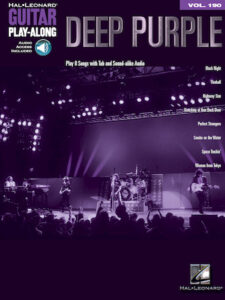
The ProjeKcts and Fractured Continuity (1997-Present):
- ProjeKcts (1997-1999): Fripp split the Double Trio into four improvising sub-groups (ProjeKct One, Two, Three, Four) to explore specific sonic territories – free improvisation, electronic soundscapes, industrial beats. This became a crucial laboratory for future Crimson work.
- The “Double Duo” & Later Formations (2000-2008): Crimson returned as a quartet (Fripp, Belew, Gunn, Mastelotto), then later as a quintet adding saxophonist/flutist Mel Collins. This era produced The ConstruKction of Light (2000) and The Power to Believe (2003), blending Discipline-era intricacy with ProjeKcts’ experimentalism and heavier elements.
- The Seven-Headed Beast (2013-Present): The most radical reinvention yet. Fripp assembled a septet featuring three drummers (Gavin Harrison, Pat Mastelotto, Jeremy Stacey/Bill Rieflin), Mel Collins, Tony Levin, Jakko Jakszyk (guitar/vocals), and himself.
- Musical Style: This lineup emphasizes massive polyrhythmic power generated by the drum frontline, often reinterpreting classic material with astonishing power and precision while introducing new, complex compositions. Jakszyk handles lead vocals with reverence and skill.
- Focus: Primarily a live powerhouse, documented extensively in releases like Live in Toronto (2016), Radical Action… (2016), and Music is Our Friend (2021). Studio output has been limited but potent (Meltdown: Live in Mexico City features significant new material alongside classics).
- Status: While touring paused in 2021, Fripp maintains Crimson remains a “active, working band,” suggesting future activity is possible. Their final (to date) concert was in Tokyo in December 2021.
Core Musical Style & Innovations:
Defining Crimson’s style is impossible due to constant change, but key threads include:
- Complexity & Structure: Intricate compositions, shifting time signatures, polyrhythms, and unconventional forms.
- Dissonance & Texture: Embracing atonality, angular riffs, and harsh textures alongside moments of sublime beauty.
- Improvisation: A vital component throughout their history, from free-form jams to structured improvisational frameworks.
- Rhythmic Innovation: From Bruford’s jazz-inflected precision to the polyrhythmic interlock of the Discipline era to the earth-shaking power of the three-drummer frontline.
- Instrumental Mastery: Demanding a consistently high level of technical skill and ensemble cohesion from all members.
- Embracing Technology: Pioneers in using the Mellotron, Frippertronics (tape delay system), guitar synthesizers, electronic drums, and digital production tools.
- Genre Fluidity: Seamlessly incorporating elements from classical, jazz, folk, avant-garde, electronic, world music, New Wave, and heavy metal.
Legacy & Influence:
King Crimson’s influence is vast and deep:
- Prog Rock Architects: Defined the genre’s ambition, complexity, and seriousness alongside contemporaries like Yes and Genesis. Bands from Rush, Tool, Porcupine Tree, Opeth, and Mars Volta owe immense debts.
- Math Rock & Post-Rock: Crimson’s rhythmic complexity and interlocking guitars directly inspired the math rock movement (Battles, Don Caballero) and influenced the textural explorations of post-rock (Godspeed You! Black Emperor).
- Art Rock & Alternative: Their adventurous spirit and blending of styles influenced art rock icons (Talking Heads, David Bowie) and countless alternative/experimental bands (Radiohead has frequently cited them as an influence).
- Heavy Music: The crushing power of the Wetton-era and the rhythmic intensity of later lineups profoundly impacted progressive metal, djent, and avant-metal.
- Cult of Fripp: Robert Fripp’s unique guitar style (“Frippertronics,” searing leads, precise rhythms), his philosophical approach to music and band management (“the first freely improvising rock group”), and his unwavering artistic integrity have made him a revered and influential figure.
- Live Performance: Known for intense, powerful, and technically flawless concerts, constantly pushing their own material and improvising. The three-drummer setup is a modern marvel of rhythmic coordination.
- Independent Ethos: Fripp’s management of the band through Discipline Global Mobile (DGM) since 1992 set a precedent for artist independence and high-quality archival releases (live recordings, box sets like the extensive The Complete 1969 Recordings).
Key Members (Illustrating the Flux):
- Robert Fripp: Guitar, Soundscapes, Frippertronics. The constant. Architect, leader, and driving force.
- Greg Lake: Bass, Vocals (1969-1970). Iconic voice on the debut. Left to form ELP.
- Ian McDonald: Saxophone, Flute, Mellotron, Keyboards (1969-1970). Key sound architect of the debut.
- Michael Giles: Drums (1969-1970). Foundational jazz-influenced drummer.
- Peter Sinfield: Lyrics, Lighting, Visions (1969-1972). Lyrical and visual mastermind of the early years.
- Mel Collins: Saxophones, Flute (1970-1972, 2013-Present). Provided crucial melodic and textural elements.
- Boz Burrell: Bass, Vocals (1971-1972).
- John Wetton: Bass, Vocals (1972-1974). Powerful voice and bass foundation for the classic trilogy.
- Bill Bruford: Drums, Percussion (1972-1974, 1981-1997). Arguably the defining Crimson drummer, known for precision, power, and melodic sensibility.
- David Cross: Violin, Viola, Keyboards (1972-1974). Added unique textures and melodic counterpoint.
- Adrian Belew: Guitar, Vocals, Words (1981-2008). Brought a new wave sensibility, vocal character, and incredible guitar versatility.
- Tony Levin: Bass, Chapman Stick, Backing Vocals (1981-1999, 2003-2008, 2013-Present). Master of groove and texture, crucial to the Discipline and later eras. Inventor of “Funk Fingers.”
- Trey Gunn: Warr Guitar, Chapman Stick (1994-2003). Expanded the bass/midrange textures in the Double Trio and Double Duo eras.
- Pat Mastelotto: Drums, Electronics (1994-2008, 2013-Present). Brought electronic percussion and industrial textures, core member of the three-drummer frontline.
- Gavin Harrison: Drums (2007-2008, 2013-Present). Technical virtuoso, core member of the three-drummer frontline.
- Jakko Jakszyk: Guitar, Flute, Vocals (2013-Present). Handles lead vocals and guitar duties adeptly in the current era.
- Jeremy Stacey: Drums, Keyboards (2016-Present). Multi-instrumentalist in the three-drummer frontline.
Essential Works:
- Studio: In the Court of the Crimson King (1969), Larks’ Tongues in Aspic (1973), Starless and Bible Black (1974), Red (1974), Discipline (1981), THRAK (1995).
- Live (Capturing Vital Eras): Earthbound (1972 – raw Wetton/Bruford), USA (1975 – peak Wetton/Bruford power), The Great Deceiver (1992 box set – comprehensive Wetton/Bruford era), Absent Lovers: Live in Montreal 1984 (1984 Discipline quartet), Heavy ConstruKction (2000 Double Duo), Radical Action to Unseat the Hold of Monkey Mind (2016 – three-drummer power), Music is Our Friend: Live in Washington and Albany (2021 – final tour document).
- Compilations/Introductions: The 21st Century Guide to King Crimson (2004), The Elements (series).
King Crimson stands as a unique phenomenon in rock music. They are the restless pioneers who never rested on past glories, constantly dismantling and rebuilding their sound. From the symphonic apocalypse of their debut to the intricate minimalism of the 80s, the industrial thunder of the 90s, and the polyrhythmic juggernaut of the present, their journey has been one of uncompromising exploration. Robert Fripp’s unwavering vision, coupled with the contributions of immensely talented musicians across generations, has forged a body of work that remains challenging, rewarding, and utterly vital. Their influence permeates countless genres, and their music continues to inspire awe and demand deep listening. King Crimson is less a band with a history and more an ongoing principle: the principle that rock music can be a vehicle for profound artistic expression, limitless complexity, and unceasing evolution. They are, truly, the architects of a crimson cathedral built on sound.
Browse in the Library:
Or browse in the categories menus & download the Library Catalog PDF:
King Crimson – In The Court Of The Crimson King (Album Visualiser)
00:00:00 21st Century Schizoid Man (Including ‘Mirrors’) 00:07:23 I Talk To The Wind 00:13:29 Epitaph (Including ‘March For No Reason’ and ‘Tomorrow And Tomorrow’) 00:22:15 Moonchild (Including ‘The Dream’ and ‘The Illusion’) 00:34:27 The Court Of The Crimson King (Including ‘The Return Of The Fire Witch’ and ‘The Dance Of The Puppets’) 00:43:52 21st Century Schizoid Man (Radio Version) Bonus Track 00:51:12 I Talk To The Wind (Duo Version) Bonus Track 00:55:55 A Man A City (Live At The Fillmore West) Bonus Track
